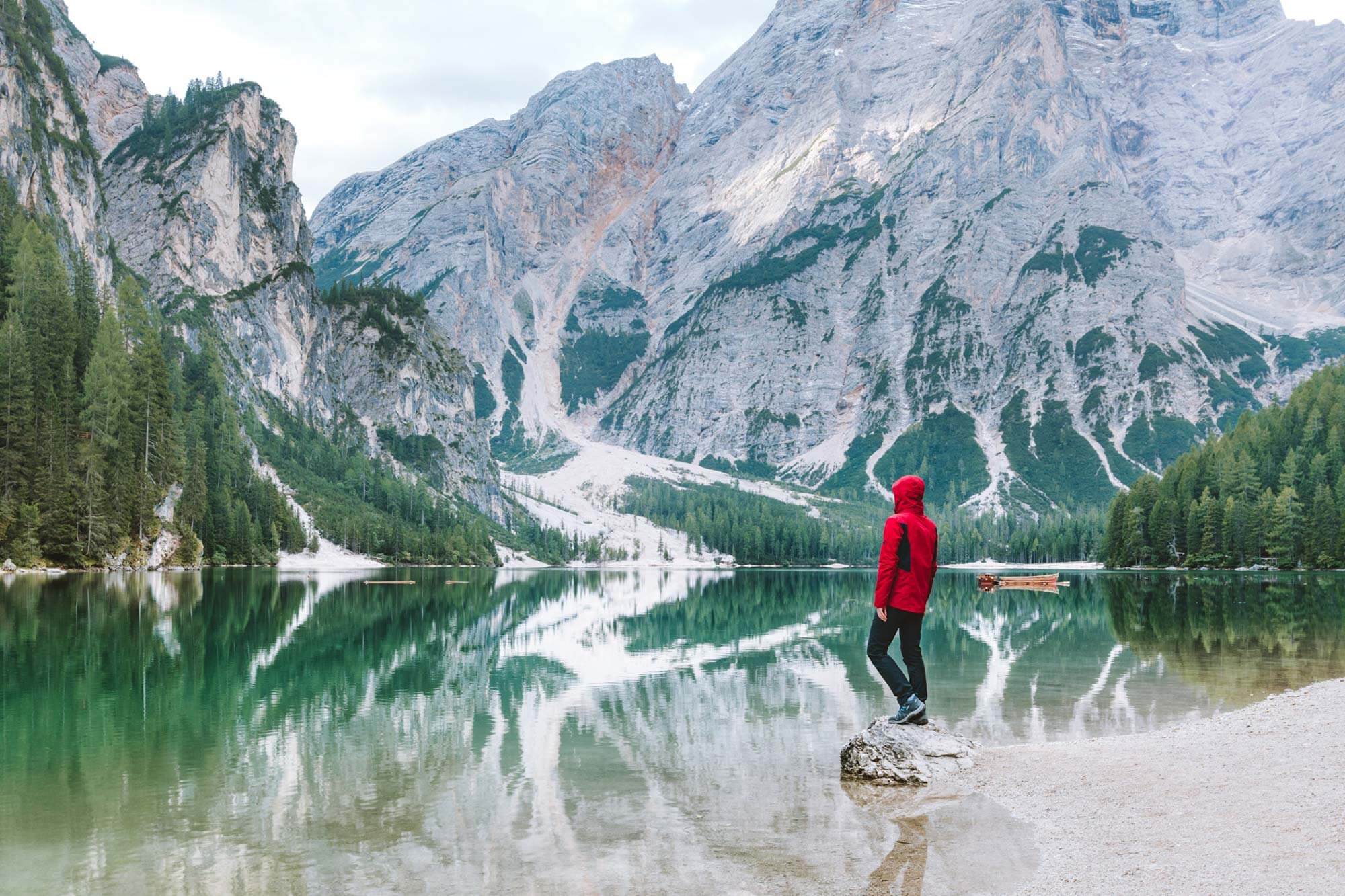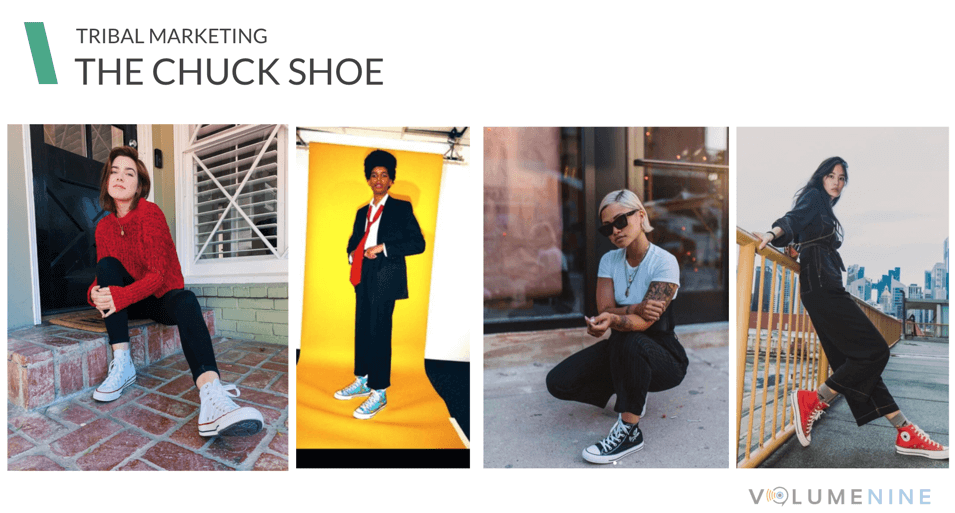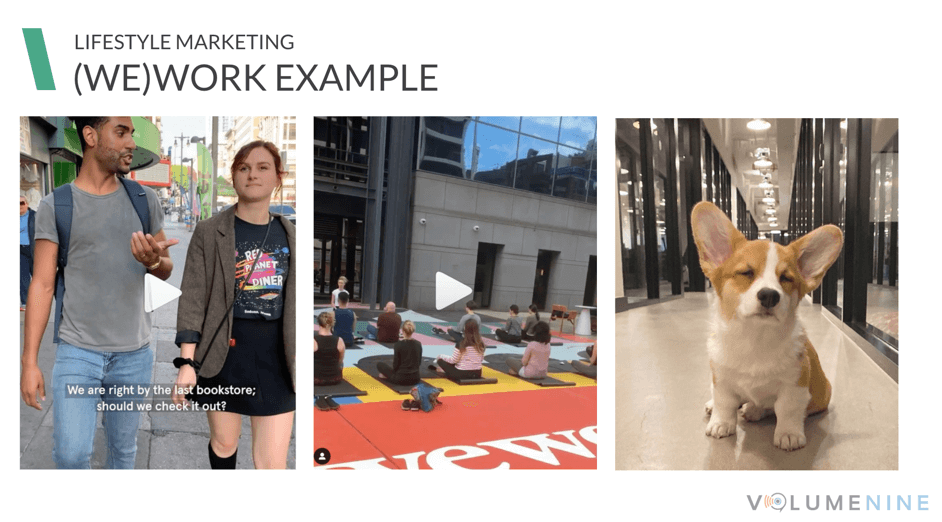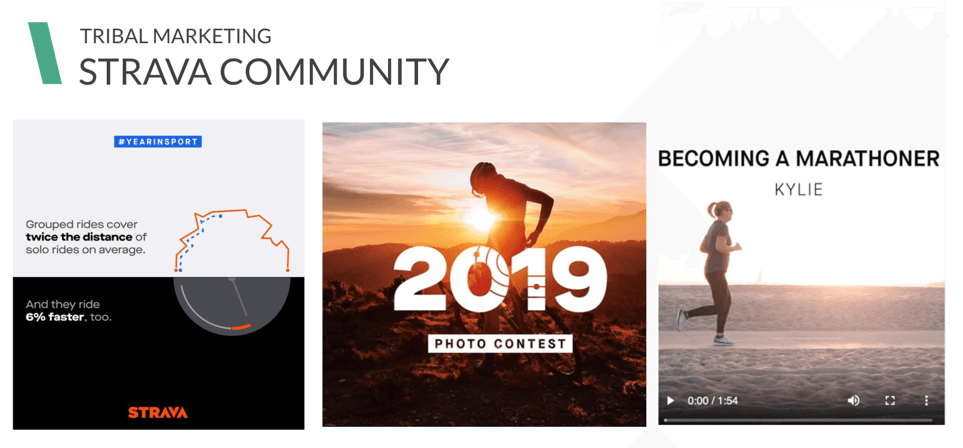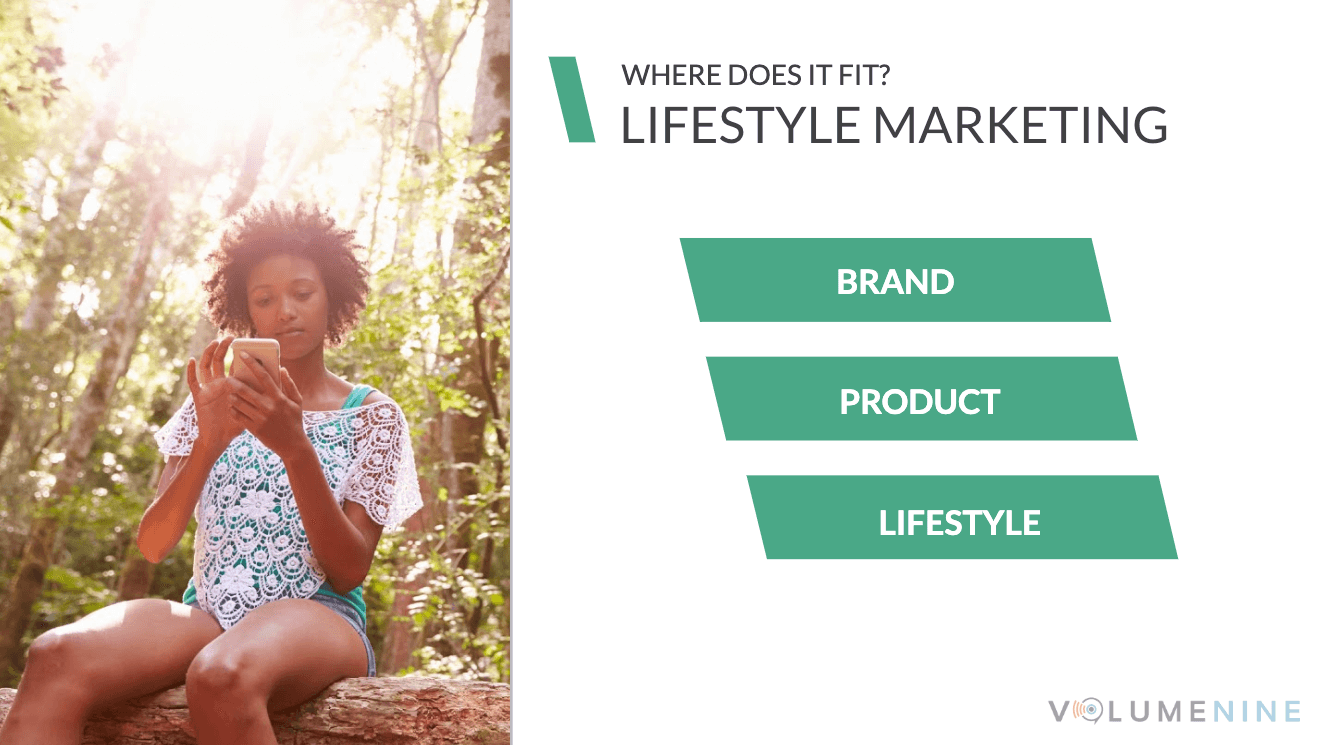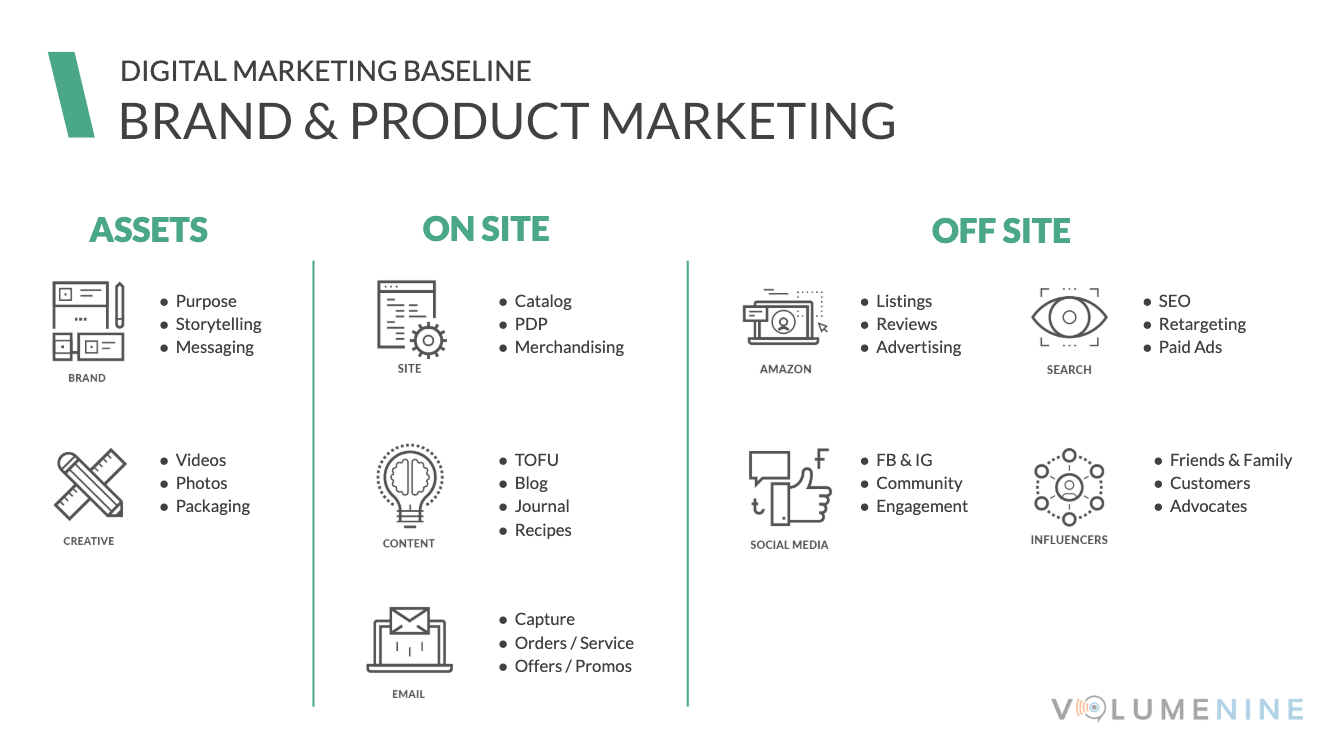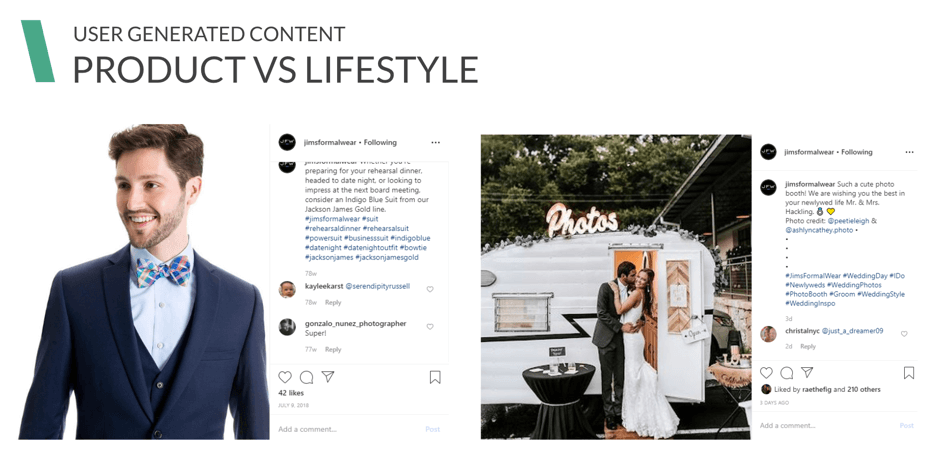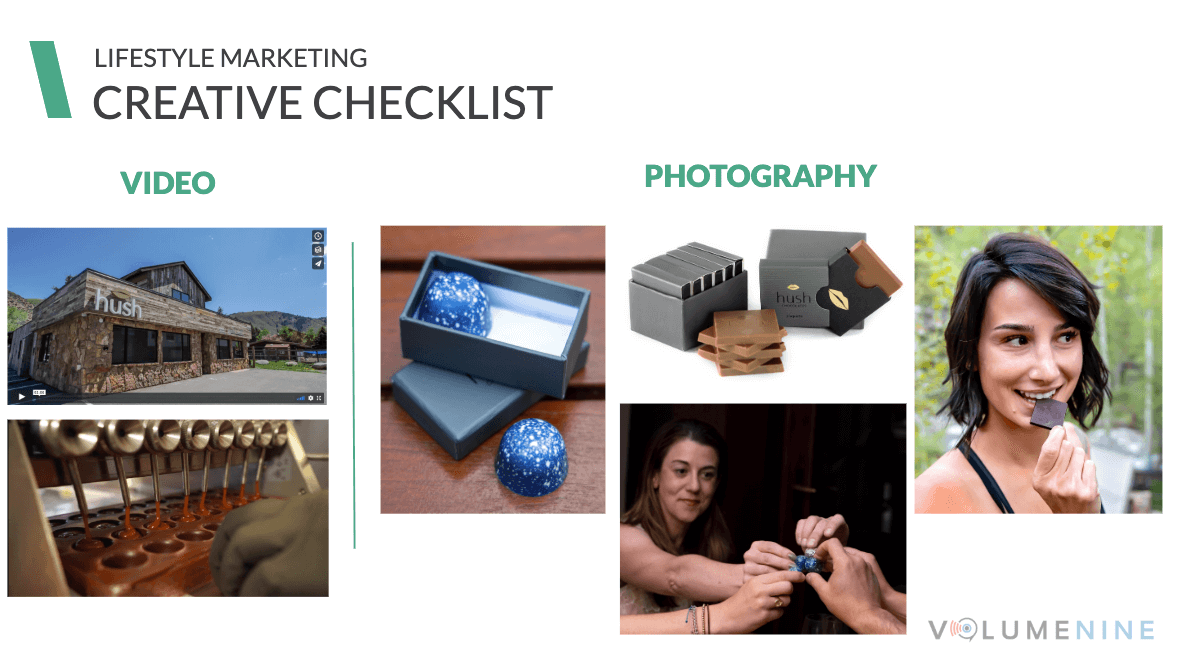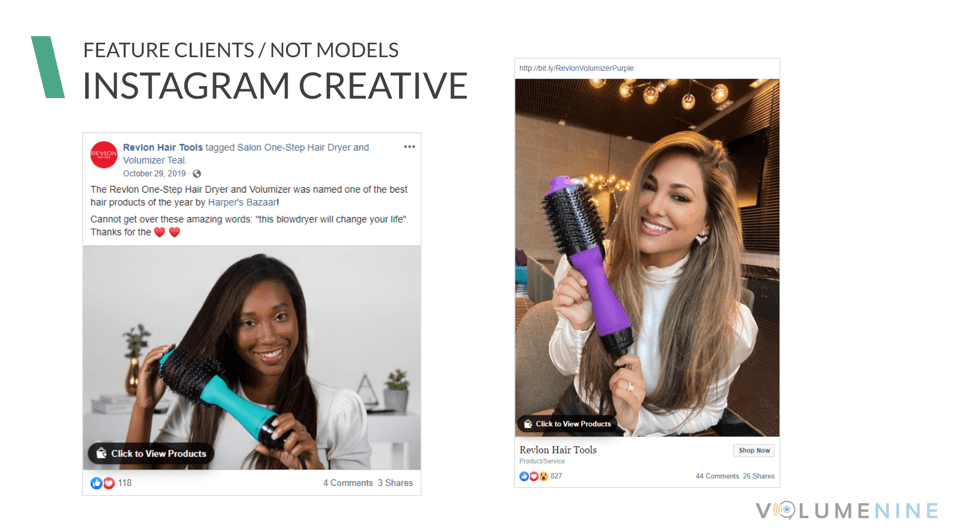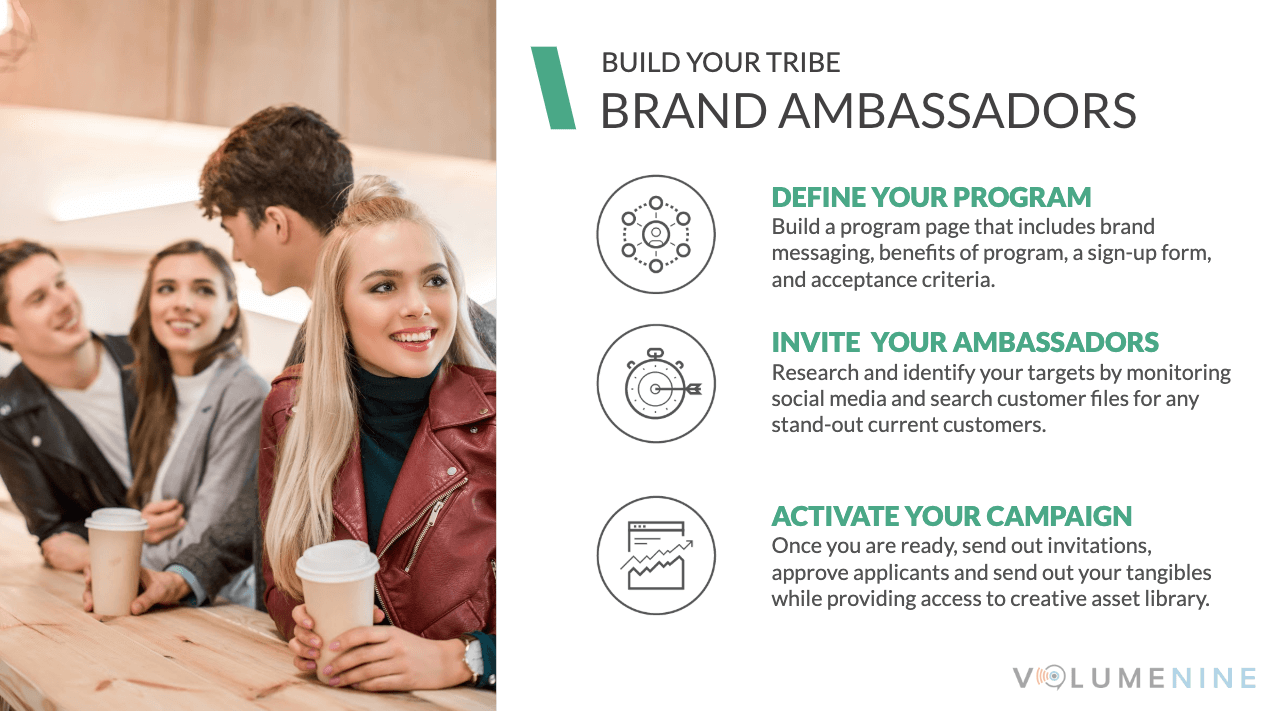Guide to Lifestyle Marketing
As our lives become increasingly digital, the way we interact with brands is changing drastically. A true lifestyle brand understands this and focuses on connecting with their audience and customers in ways that are emotional and/or aspirational. They are conversational (focused on relationships) rather than transactional (focused on sales). With lifestyle brands, there is also a strong focus on community, on feeling like a part of something when you buy.
Table of Contents
- What is a Lifestyle Brand?
- Why Lifestyle Marketing is Important?
- How to Build a Lifestyle Brand Online
- Creative Asset Checklist for Lifestyle Marketing
- Social Media Strategies for Lifestyle Brands
- Establishing A Brand Ambassador Program
- Benefits of Lifestyle Brand Marketing
What is a Lifestyle Brand?
According to the American Marketing Association, a lifestyle brand is “a company that markets its products or services to embody the interests, attitudes, and opinions of a group or a culture.” Essentially, a lifestyle brand inspires and motivates its audience and aims to blend its products or services into that audience’s way of life.
But what is “lifestyle”?
Before we dig too deep into how a lifestyle brand connects with its customers or markets itself in a digital world, we’d really like to get down to the nitty-gritty. When we say “lifestyle brand,” what do we really mean by “lifestyle”?
Well, to put it simply, a lifestyle is the way in which a person or a group lives. Think of your own lifestyle: your home life, your work, your hobbies, and beliefs. But there’s another element of our lifestyles that isn’t easy to define: our aspirations. Many of us want to lose weight, have a cleaner house, have a more organized inbox, get less angry at other drivers on the road.
As a lifestyle brand, tapping into these two elements of your audience’s life — who they are now and who they want to be — allows you to connect with them in ways that other brands just can’t. Understanding who people are or who they want to be allow a lifestyle brand to craft experiences for the individual, or at least make it feel that way.
And by speaking directly to a person and who they are/who they want to be, a lifestyle brand immediately creates an identity: “This is who I am and these are the products that support that identity.” Your clients or customers feel good about the life they’re creating for themselves, they feel part of something, and they believe in the story it tells about them and others.
Those are the cornerstones of a lifestyle brand. But how does a lifestyle brand really find those pieces, and connect with their audience so deeply?
The psychology of the lifestyle brand
A lifestyle brand isn’t built solely on pretty pictures, despite what Instagram looks like these days. These brands have a deep understanding of their target audience and they leverage that knowledge in multiple ways. From how they craft their product or service copy to how they engage on social media, a lifestyle brand is constantly connecting with what their audience wants out of life.
A lifestyle brand also taps into its audience’s pain points and circumstances by leveraging psychographics, not just demographics. We’re not talking about just age ranges and income levels. We’re talking about interests, personality traits, values, expressed opinions, etc. In-depth market research, focus groups, surveys, and other tools are used to really understand the brand’s audience to revamp or build out campaigns. And while traditional demographics do play a role, they’re used more to hone in on the client avatar rather than serve as the entire avatar.
This attention to detail isn’t just used in their foundation for marketing, either. It bleeds into everything a lifestyle brand does.
The marketing approach for a lifestyle brand
Lifestyle brands are an entirely different breed in terms of their marketing approach. More than ever, these brands have to play with the long game in mind. Other brands use demographics and industry benchmarks to guide copy for sales pages and short-term launches. These companies often have short-term sales goals in mind. Lifestyle brands, on the other hand, infuse psychographics and their deep connection to their customers into everything they create. There is not, generally speaking, a focus on short-term sales growth but rather a long-term client base building.
There’s also a key difference in their marketing collateral and campaigns: people first, product second. Rather than focusing on the key benefits of their product or service, lifestyle brands focus on the transformation, emotions, and (yes) the lifestyle that their audience craves. After telling a story about what is possible, or reflecting back the consumer’s life in their creative and content, lifestyle brands then approach selling to their audience. This builds a connection between the brand, the life the customer wants, and the products the brand sells — without the brand ever really saying “This product will give you X results.”
With all of that said, it’s time to be realistic. Building a strong lifestyle brand isn’t a short-term project, and it might even take a sweet mixture of art and science to pull it off.
The science (and art) of selling a lifestyle brand
A lifestyle brand is one that has really embraced the art of the soft sell. For some marketing teams, this can be a difficult shift or approach, especially when so many teams are used to the sell fast, sell hard mentality that so many companies have to embrace. A lifestyle brand, on the other hand, appeals to the audience’s emotions and holds conversations with the audience that builds trust first. This conversational approach, while it might not result in high sales numbers right away, embed the brand in the customers’ lives, making their lifestyle and the products they sell inseparable… when done right, of course.
A key element of a lifestyle brand is the ability to tell — and sell — stories. When done well, a story about your brand or how you support a person’s lifestyle can separate your company from the crowd. Of course, authenticity and choosing the proper stories for your audience are critical. Any audience can sniff out a forced or fake story in a heartbeat. The trick is to tell a story that’s so compelling that a potential customer instantly knows they want (and need) your brand in their life. Telling those stories takes time to craft, and it requires the use of all those psychographics, relationship-building campaigns, and a strong digital marketing strategy. After all, if you’re not telling the right stories in the right places to the right people… your lifestyle brand won’t get too far will it?
Of course, it takes work and the right foundations to support this lifestyle marketing approach — and it’s not the right approach for every company. Lucky for you, we’ll help you break down those foundations in the rest of this guide.
Examples of Lifestyle Brands
@Converse uses celebrities and influencers to connect more with the younger generation and leverage their heritage and history to connect with the older generation. Across all their customers, the landmark appeal is to the individual: Converse fits into your style, whatever that may be. Storytelling is a major component. Their blog is packed with a wide variety of content, including interviews, video, and celebrations of their fans. They don’t use major calls to action so it doesn’t feel like a sales push and it’s massively shareable. The same goes for their social platforms. Here, they use a similar style of content but they also use social advertising that more specifically targets a particular generation.
@WeWork operates shared office space in cities and countries worldwide, and they’re just as cool as the spaces they provide. Why? Because their photography is top-notch, highlighting their cool workplaces in interesting, unique ways that make you want to jump into the picture and be right there.
@Strava is an online community of athletes, mainly runners and cyclists, who share their workouts and compete to beat each other.
The Right Way to Approach Lifestyle Marketing
It’s important to note, before we go any further, that a lifestyle brand isn’t for just one industry or audience. A wide range of companies and industries can embrace lifestyle marketing to grow their brand awareness, customer base, and long-term sales. That doesn’t mean it’s right for everyone, though.
Lifestyle branding is becoming a powerful marketing tactic for products that aren’t necessarily cut and dry, or utilitarian. Fashion brands, recreational products, travel brands, and many CPG brands are leveraging lifestyle marketing.
Why does lifestyle marketing work so well for these types of companies?
Because there are so many new ways for brands – and people – to publish their stories. And, as you know, stories are the foundation of a lifestyle brand’s success. The lifestyle brand approach is on the rise today because consumers expect more than just being “sold to.” They want to buy from a brand that backs up their values, which makes them feel a part of something, that strengthens their own identity.
If your company already operates as a lifestyle brand or is hoping to shift your marketing tactics to more of a lifestyle approach, there are a few things you should know.
Lifestyle marketing is an extension of your digital marketing efforts
Digital marketing fundamentals
Before we dive into the different lifestyle brand marketing strategies in the rest of this guide, we need to cover the basics of brand and product marketing that you should either have in place or be working on as you delve deeper into lifestyle marketing.
Baseline brand guidelines
Your lifestyle brand doesn’t have ground to stand on until you know who you’re speaking to and what lifestyle they lead/want to lead. This is where you’ll need to lay the groundwork to create your brand purpose and story. At this point, you should also have identified and documented 2-3 generic personas and have written down core messaging for your product differentiator as it relates to each persona.
A lifestyle brand will need a lot of creative assets in the form of videography and custom photos, arguably more so than any other brand out there. Why? People first, product second. If you’re not showing people living the lifestyle you promote, you’re just another company selling a product. Using your brand assets, generate creative assets that reflect back the lifestyle you’re promoting.
On-site assets for lifestyle brands
Ensure that your site is working in favor of your lifestyle brand, rather than against it. Start with the basics: Consider updating pages with creative and messaging you’ve crafted in the previous foundations, including your product catalog, your product detail pages, and any merchandising strategies (e.g. /collections/ in Shopify).
You can’t have a lifestyle brand unless you have copy and content that shows people which lifestyle(s) you support. The foundation of your lifestyle marketing should include strong website content and copy, including top of funnel content (e.g. blog, travel journal, or recipes) that both introduces them to your brand but also supports your lifestyle marketing.
Be sure to utilize email to promote your brand and engage with customers, not just send them offers. When you highlight products or send promotions, try to also include your website content and creative to strike a nice balance in your email strategy.
Offsite assets for lifestyle brands
Like it or not, Amazon currently rules the e-commerce space. But that doesn’t mean you can’t leverage it to really boost your lifestyle brand sales. To do that, you’ll need to make sure you have optimized product listings, a review gathering systems, and also have advertising strategies in place.
Google and other search engines essentially control your lifestyle brand’s organic traffic. You want to make sure you’ve got the best leg up, which is why you should definitely have:
- Mobile-first focus
- Google Search Console & Google Analytics set up properly
- Metadata optimized (i.e. page titles, meta descriptions, etc.)
- 404 management: custom 404 page, 301 redirect strategy
- Branded search and retargeting setup for Google Ads
We share our lives on social media, which means your lifestyle brand needs to leverage it properly. Without it, your audience has no way to interact with and share how your products support their lifestyle. Make sure you’re starting with (at the very least) Facebook and Instagram profiles and have installed the Facebook Pixel.
Lifestyle brands can engage with influencers who align with their lifestyle, and who already operate within the spaces they want to occupy. Of course, influencers can mean a wide range of social users, so start with friends and family and current customers as a good baseline strategy before jumping into more advanced and aggressive tactics.
These are just the foundational assets you need to boost your lifestyle digital marketing strategy. Once you have these elements in place, or you’re aware of how you could use them to your advantage, it’s time to consider how to use all these building blocks to actually create (and market) your brand.
The Risks of Lifestyle Marketing
Soft sell
Lifestyle brands aren’t hitting their audience with hard-and-fast sales tactics. They’re telling stories and slowly alluding to how their products or services can equate to the lifestyle their audience has or wants. Because of this soft-sell approach, it’s easy to lose focus or let campaigns become diluted.
But the purpose of lifestyle marketing is to help make a sale at the end of the day — you’re a business, after all. If you’re forgetting to sell or don’t have an intentional flow to your marketing efforts, you’ll fail to see even long-term results. This risk, as a lifestyle brand marketer, cannot be understated.
Competition
Lifestyle branding and marketing also opens you up to the competition that exists in a particular lifestyle group. A lifestyle CPG brand, for example, will have competition from other CPG brands that sell a similar product, sure. But in the arena of the lifestyle, it is promoting, there’s even more competition if you target a generic lifestyle that is too broad.
Essentially, you need a lifestyle marketing strategy that still moves the sales needle forward while building trust and differentiating you from the competition. Of course, this requires a better understanding of what it means to really market a lifestyle brand.
How to Build a Lifestyle Brand
You already know that a lifestyle brand is only as good as its understanding of its audience. If you don’t know the lifestyle your ideal client/customers want to lead or currently leads, you don’t have much to stand on. That’s why we’ll be walking you through a couple of useful exercises to really pinpoint what your lifestyle brand offers and what makes you different.
The WHAT: Understand your customers
You’re not a lifestyle brand unless you’re selling a lifestyle. So ask yourself if you truly understand your customer:
- What do your customers want?
- What do they truly want out of life?
- What interests do they have?
- What do they feel strongly about?
- What do they like? Dislike?
- What does success look like for them?
- Who do they admire?
- What is their ideal lifestyle (even if they think they’ll never attain it)?
The WHY: What you (and your competition) offer
Now that you’ve honed in on who you’re talking to with your marketing, it’s time to understand why they’re going to want to engage with you. This requires seeing what other people are doing right (and wrong) and what holes your competition may have left.
To do this, make a generalized lifestyle brands list: top lifestyle brands that succeed at activating and uniting communities. You might add companies like Apple, Nike, Airstream, or brands you know and love. After that list is done, narrow in on a list of competitor brands within your specific industry — whether any of them have really created a lifestyle brand or not.
Then, ask yourself:
- What sets your brand apart from the others?
- What is your unique selling proposition?
- What is your competition doing that seems to be working?
- Where are they not serving your ideal audience? What could you do to fill that gap?
- Most importantly: Why would your target audience care about your brand or your product?
Once you can speak to this, you can begin to get a sense for what your ideal customer base is really craving and how you can really serve them. The more specific you can be, even if the audience base seems smaller because of it, the better.
After you’ve done the groundwork and know who you’re talking to, the next step is to find ways to connect and engage with your audience.
The HOW: Engaging with your lifestyle audience
Now that you know who you’re talking to and why they’d care about what you’re offering, you can tap into that knowledge to fully engage with your people. Consider their interests, values, and aspirational thoughts and how can you tell your story in a way that resonates?
- Content is king – We’ll keep it plain and simple: the best way to build a lifestyle brand audience is to create outstanding, authentic content. Rather than using the content to sell your products, however, it’s important to create something that resonates with your audience. Blogs that make them feel “seen,” or social media posts that have them hitting “Share” — this is the sort of content you want to create.
- Loyal followings – Your efforts to engage with your ideal audience with content can help you build a devoted following – a community of customers who share your values and ideals. The best part about this, though, is that those loyal followers will encourage like-minded people to buy into the lifestyle and brand you’re selling.
- Partnerships – Align yourself with similar brands. Referencing or partnering with non-competing brands who are already in the ‘lifestyle space’ will strengthen your audience’s association of your brand with that lifestyle. Plus, you can leverage the other brands’ wider reach to spread brand awareness without a ton of ad spend.
- Multi-channel – You can’t just create content in a vacuum; you have to share it in multiple places to really make sure your audience connects you to their lifestyle. So create and share content across all marketing channels — social, email, blogs, ads, etc. When you make sure your message and approach are cohesive across platforms, you’ll be able to build momentum with your target demographics.
Multi-format – Use Video!
Obviously, content marketing is the best way for your lifestyle brand to connect with your audience. But content doesn’t have to just mean blogs or emails. There are so many forms of content that can boost awareness for your brand and establish your connection to the lifestyle you promote.
Great lifestyle marketing content isn’t limited to one format. It utilizes different ones, like:
- Blog Posts
- Infographics
- Whitepapers
- Case studies
- Videos (this is a big one!)
- Podcasts
- Guest posts
- Newsletters
- Social captions
Really, the type of content you create for your brand should align with the lifestyle of your audience. If your audience consists of busy parents on the go, creating easy-to-consume content like podcasts or short videos may work best. It also has to be original content that reaffirms your audience lifestyle choices… and doesn’t just sell your product.
That’s all well and good… but how do you do all of this?
Reading all of that, you might feel overwhelmed. How are you supposed to fill the gaps left by your competition, create all this content, and engage with your audience members? It feels like a lot. The good news is, we’re going to break down each of these strategies into actual processes and tactics you can use to strengthen your lifestyle marketing efforts.
Creative Assets for Lifestyle Marketing
As a lifestyle brand, a strong brand identity is arguably even more critical for your success. To make the most of your lifestyle marketing, you’ll need to embrace the visual, branded element of storytelling. You know the lifestyle you want to promote, but now your assets need to align with and drive home that message.
Brand assets you’ll want to create
This requires blending and aligning video, photo, and other creative (i.e. graphics, infographics, branded assets, etc.) with the brand you have created and the story you are telling. Keep in mind that your brand creative is not usually siloed; it will be found on your website, on social media, on your blogs, on your YouTube channel, on your ads. The idea is to be as cohesive as possible and to promote the lifestyle that represents your brands in impactful and accurate ways so that you have brand consistency.
Of course, brand and creative assets are particularly impactful for your lifestyle brand.
- Video: a 90-second origin story – Whether it’s for your audience’s first video introduction to your brand, reused for Facebook trigger videos, or included in onboarding emails, a 90-second origin story video is a great idea. The video tells the “why” of your brand, includes elements of the lifestyle you want to promote, and might include behind-the-scenes shots of how you create and/or execute on your brand promise.
- Video: 10-second short format for social media top of the funnel – Trigger videos are a great way to increase brand awareness and expand reach. Consider creating a short 10-second video for this top of the funnel approach. It can be something about your brand, the lifestyle you promote, something that grabs their attention, or something that makes them laugh.
- Photography: Product photos for merchandising, tradeshows and ads – For CPG and other product-based lifestyle brands, the importance of on-brand photography cannot be understated. Of course, for the e-commerce part of your website, but also for social media, advertising, tradeshows or press, etc. Finding a range of angles, flat-lays, and products in action are ideal for lifestyle brands.
- Photography: lifestyle photos for social media – As a lifestyle brand, having a bank of lifestyle photos of products for social media is critical. The sheer volume of content needed means you’ll want to schedule multiple (or ongoing) shoots to bank up shots of your product in action. A focus on lifestyle first, product second, is also more effective for social media content.
- Influencer asset library and guidelines – One of the best ways to support an influencer is with an asset library and guidelines. These ensure the influencer is sharing content that is still up to brand standards and makes it easy for them to edit and post content that makes the partnership worthwhile. An influencer asset library and guidelines might include Brand guidelines (colors, fonts, language, lifestyle), Template copy to adapt and a list of shots to take of product.
One last note: a lifestyle brand is not a stationary creation. It will adapt, especially as you strengthen your target audience, hone in on product development, and make updates from a visual/aesthetic perspective. Keep in mind that your lifestyle brand will need to invest attention and resources in further development and documentation of your logo, brand identity, color palette, and so on. While these will hopefully not change much as your brand awareness elevates, it is normal to “refresh” or update some elements.
Early on, you should establish brand guidelines and an asset library, so that consistency across all web, print, social, and other efforts are cohesive. Teams should also consider design standards and templated designs for things like email templates, social graphics by platform, PowerPoints and webinars, media kits, and so on.
Consider all the places your lifestyle brand will show up, and make sure the assets used in that arena are on-brand and on-message.
Social Media For Lifestyle Brands
For lifestyle brands, social media is the lifeblood of maintaining your connection with your audience and increasing brand awareness. That’s why a strong social media strategy is non-negotiable. To create a strategy that works for your brand, though, you’ll need to understand which platforms attract your audience.
Social media as lifestyle reinforcement
Social media users choose a certain platform for many reasons, but one is to support their lifestyle aspirations. Think about it: when we want to eat healthier, we flock to tools like Pinterest to find and save healthy recipes. When we want to lose weight, we fill our Instagram feed with inspiring athletes and ideal bodies. We use YouTube when we want to learn something new.
With that in mind, consider all of the elements of your lifestyle brand and its audience: where are they going? What content are they engaging with? From there, you can streamline your social media efforts and choose your “top priority” platforms — rather than wasting resources on being everywhere.
Differentiating your brand
Using social media marketing, a lifestyle brand can set itself apart, as well as drive home its message and story. Consumers spend over 2 hours a day on social media, which provides extensive room for touchpoints with your brand — if you’re present. A hallmark of a lifestyle brand is its deep understanding of its consumers, and social media is a great way to get to know your target audience
Additionally, consumers are more swayed than ever by social proof, so engaging existing consumers, sharing user-generated content, and generally focusing on the community has the power to sway other potential consumers to join your brand.
But this is the important key in differentiating your brand on social media: the aim isn’t to increase followers. It’s to build a community. Members of this community don’t just like your content, they interact with it – and with each other. This allows your brand to drive conversations around your desired action: purchase.
Operating with social media as “home base”
Social media is where your audience lives, and it’s also where influencers and their audiences live. That’s why it’s important to view social media as critical real estate — as “home base,” if you will. It’s where you go to learn more about who your audience really is, and there’s so much information to mine, i.e. who they follow, which influencers they take cues from, and the kind of content they engage with and share.
Lifestyle brands can also engage with influencers who align with their lifestyle, and who already operate within the spaces and tribes (more on this in a bit) they want to occupy. Note that most interactions with influencers and audiences will likely take place in the social media arena.
Now, for the technical bits
- Choosing social media platforms – As a lifestyle brand, you don’t have to use every social media platform in order to be successful. Quite the opposite, in fact. Look at historical data in terms of following, engagement, conversions, etc. to see which platforms have performed well. If this data isn’t available to you, do your research: which platforms are competitors on? For individuals who lead (or aspire to lead) the lifestyle you’re promoting, which platforms do they most use?
- When and how much you’re posting – It’s a good idea to pay attention to how much you’re posting, regardless of platform. Too many posts and you’ll overwhelm your followers and turn them away. Too few and they won’t have the opportunity to really connect with you. There is plenty of data suggesting times and days to post, but the best data is the data you collect yourself, so don’t be afraid to test and play.
- Hashtags, @s, and groups – Even if you are leveraging user-generated content and influencer marketing, you’ll want to make sure you get as many (relevant) eyeballs as possible on your content. Research hashtags for platforms like Instagram and Twitter. Share content with proper tags to credit your audience/buyers on all platforms. Leverage Facebook and Pinterest groups to share content with people who most want it.
- Create diverse content – Another trap we see brands fall into? Creating 1-2 posts a week and not much else. But the idea for your social media marketing efforts is to differentiate yourself, not just bore your audience to death. Make use of unique and dynamic graphics, scroll-stopping images, and especially videos. Videos are a great way to quickly reach your audience – and are a great way for your influencers to do the same.
Intentional, curated content
People follow brands on social media for a reason: because that brand’s content, products/services, and general message aligns with what they want to see when they open their app. Make sure that you’re creating content in line with your overall message, and that you’re adding in creative that stops the scroll and inspires people to remember the lifestyle they’ve chosen or aspire to.
You don’t have to exhaust every resource to “do” social media marketing for your lifestyle brand well. You need to be intentional and make sure that everything falls under the umbrella of “on-brand and on purpose.” Most of all, you need to create content that helps you find your people… and build your tribe.
Brand Ambassador Program
Now that we’ve covered all the basics of lifestyle marketing, we’re going to dive into what is arguably the most important strategy your brand can leverage: brand ambassadors. Let’s be honest: there’s a lot of noise online, you have more than one competitor, and your audience’s feed is curated by the algorithm.
This can be incredibly frustrating for lifestyle brands (and really any brand out there today). But as Seth Godin put it, tribes are what matter now.
Tribes and lifestyle marketing
Tribes are groups of people who align with a similar lifestyle, similar values, similar interests. They might even go so far as feeling like a subculture — think of Harley Davidson. The people who ride those motorcycles recognize each other’s “status”, dress similarly, and even create “gangs.” That is the epitome of a tribe.
But the key to success for lifestyle brands is identifying and tapping into these tribes. Because tribes are not audiences — they’re not a basic demographic based on age, income, geographical location. They’re based on a lifestyle (aspirational or existing) and values that a group of people align with. And in today’s world, these tribes are increasingly found online.
So… how do you tap into your tribe?
- Identify your tribe – Start with a very particular audience. Understand it, segment it, and identify what they truly want. You should also know where they interact most online, in order to really advise where and how your brand shows up.
- Develop content and creative that resonates – After you know exactly who your tribe is and where they “live” online, create something that resonates with them — not that sells to them. Give them something that’s easy to share, easy to identify with, something that makes them say “That’s so me.”
- Promote your tribe – From there, you can encourage users to share their story (UGC) and allow your consumers to connect with each other using hashtags, community engagement, groups, etc.
Another lifestyle marketing move to try? Align with similar, non-competing brands in your lifestyle’s space.
Brand ambassadors, the connection to your tribe
Especially on social media, it can be difficult to really connect with your tribe even with truly aligned and story-based campaigns. The algorithm isn’t always in your favor, and the need for social proof is higher than ever. Often, your people will want to know that someone within their tribe is interacting with and enjoying your content and/or products before they’ll jump on board.
Cue the need for brand ambassadors and micro-influencers. When we hear the word “influencer,” it’s easy to think of the more well-known online figures who charge an arm and a leg, have millions of people following them, and seem like a walking advertisement for whatever partnership they’re pushing that week.
That is not the way to build a tribe.
As we mentioned before, a tribe is essentially a subculture. It’s a niche. This is why you need to find and partner with brand ambassadors — people who advocate for your lifestyle first and foremost. Sometimes, your brand ambassador is already a customer. Sometimes, they’re unfamiliar with your brand but align perfectly with the lifestyle you advocate for. They may have smaller followings, but the more in-line they are with the lifestyle you promote, the better. Ut’s the age-old adage of quality over quantity.
So, let’s get tactical. How do you recruit these micro-influencers and brand ambassadors?
How to recruit brand ambassadors and establish your campaign
Brand ambassador campaigns can be quite involved, depending on your brand’s industry, the ambassador you connect with, and so on. So we’re going to give you the lean and mean approach to getting started. Here’s what you need:
- A brand ambassador program page – Make it easy to showcase what you are looking for with a brand ambassador/influencer partnership. This page should include:
- Your brand messaging
- Benefits of working with your brand (affiliate programs, free product, payment, etc.)
- A sign-up form
- Acceptance criteria
- An asset library
- Promotion strategy – Once you’ve got the assets you need to create a relationship, it’s time to promote your new brand ambassador program to recruit the right “talent.” You’ll need to:
- Research and identify micro-influencers
- Pay attention to social activity, comments, and engagement to see where your audience is most active (and whom they follow)
- Search your customer files and email list for any stand-out current customers
- Add a link on your website footer to make your program page easy to find
- Campaign activation – After researching and identifying a list of potential brand ambassadors, it’s time to:
- Send invitations
- Approve initial ambassadors
- Deliver tangibles (T-shirts, samples, promo code) and a Welcome Kit
- Ongoing – Of course, continuing the relationship with your brand ambassadors ensures a stronger connection to the tribe and your future potential customers. After the initial “campaign” is over with each of your ambassadors, you’ll want to consider:
- Monitoring their campaigns, reporting on results, re-engaging them for more results
- Group communication via maybe a private Facebook Group
- Engage ambassadors for research (conduct surveys, pools, etc.)
- Creating contests or giveaways to reward top ambassadors
Let’s wrap it all up
A lifestyle brand is a different breed, and so are their “tribes.” Consumers’ needs and preferences are changing and so is the marketing landscape and, for brands in the right industries, lifestyle marketing might be the cure to decreasing sales and increasing disconnect with their customers.
But creating a lifestyle brand is not the same as creating a marketing campaign. There are foundations to build before a true lifestyle brand can be created, and the marketing strategy required for success is nuanced. In a people first, product second world, crafting your story and telling it well are critical.
More than that, you need to craft and share a story that hits home with the right people, in the right places. Once those pieces are in place, you’ll be able to see the fruits of your labor — and the benefits of a lifestyle marketing approach.
A lifestyle brand with a strong foundation and solid marketing strategy will see benefits in:
- How your brand is portrayed online
- Your story is being told by your advocates
- Your photos and videos are more authentic and resonate with your tribe
- You feature customer content alongside products, building social proof all the time
The strength and effective of their website
- You have higher quality reviews for your products
- You’re building a community and seeing increased engagement
The opportunity to expand product line inside of lifestyle position
- Your reach across the internet
- Your targeting and messaging is highly effective
- You’ve increased social media engagement and sharing
- You’ve established partnerships with similar lifestyle brands and influencers
These are all the signposts and signals of an effective, strategic, and impactful lifestyle brand. There’s no denying that this is still a somewhat new frontier, or that each “tribe” craves a different level of interactions with the brands they align with.
But with the right foundations, attention to building connections, and a focus on telling stories over selling products, your lifestyle brand can see exponential success — now and in the future.
